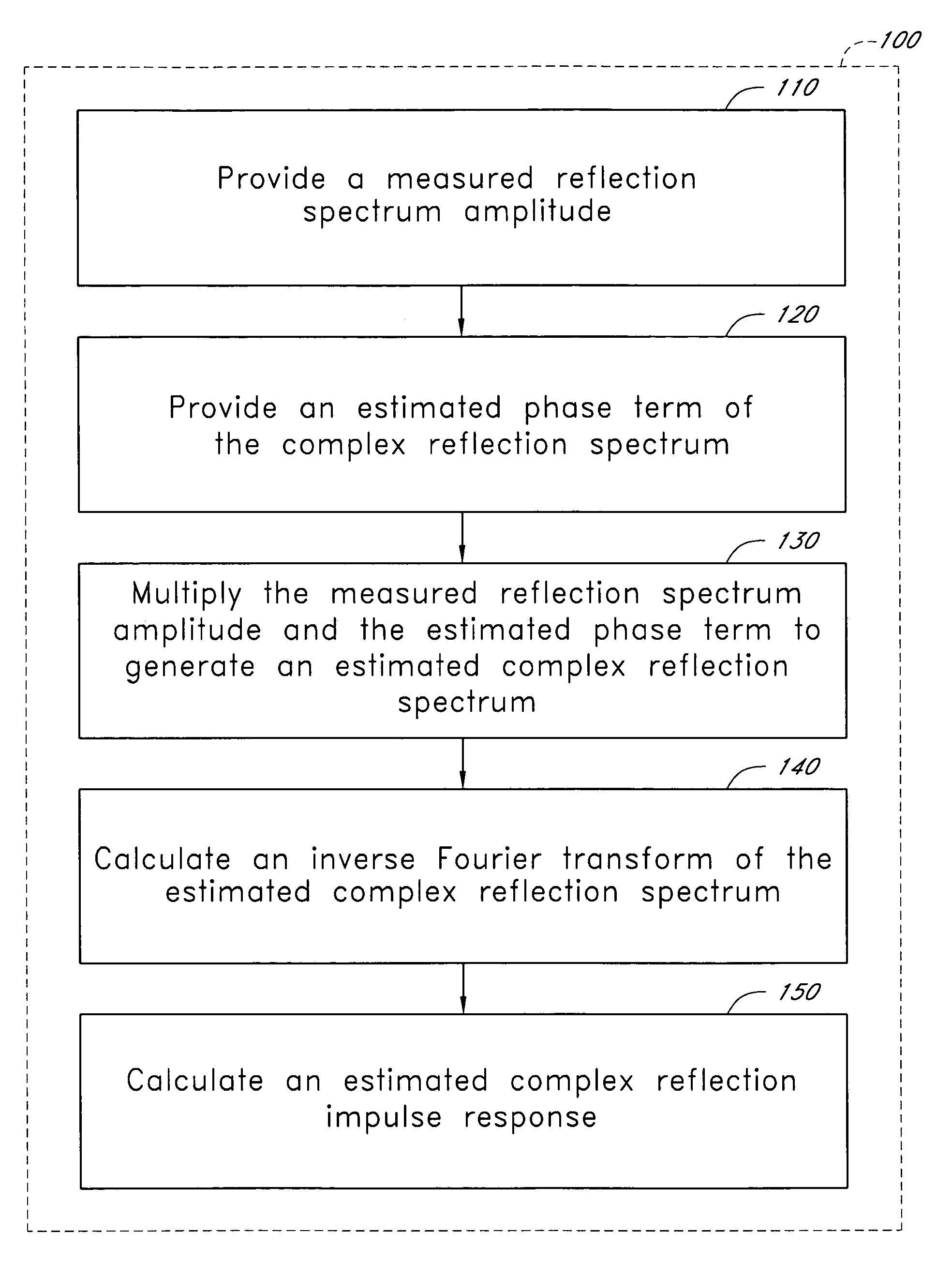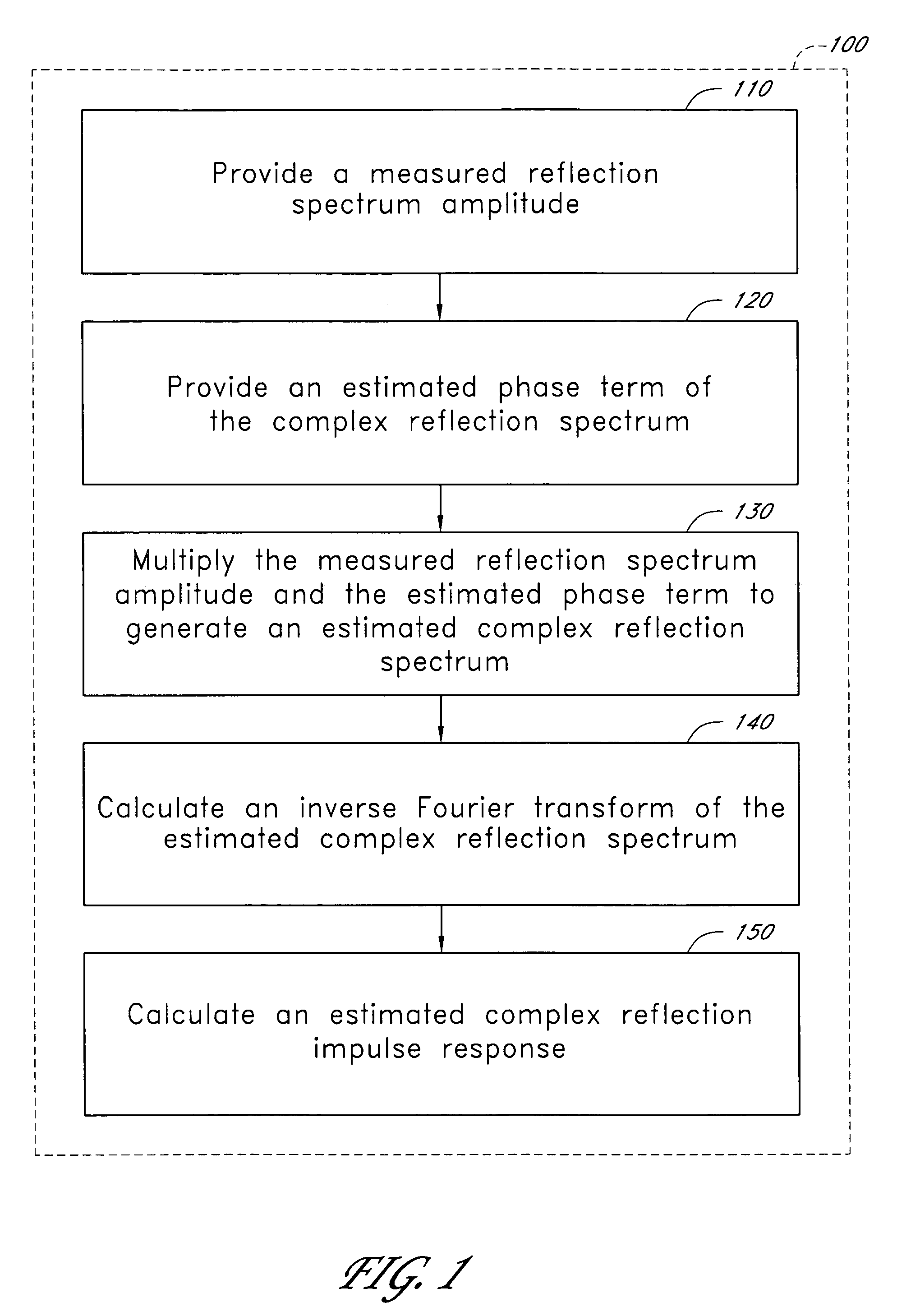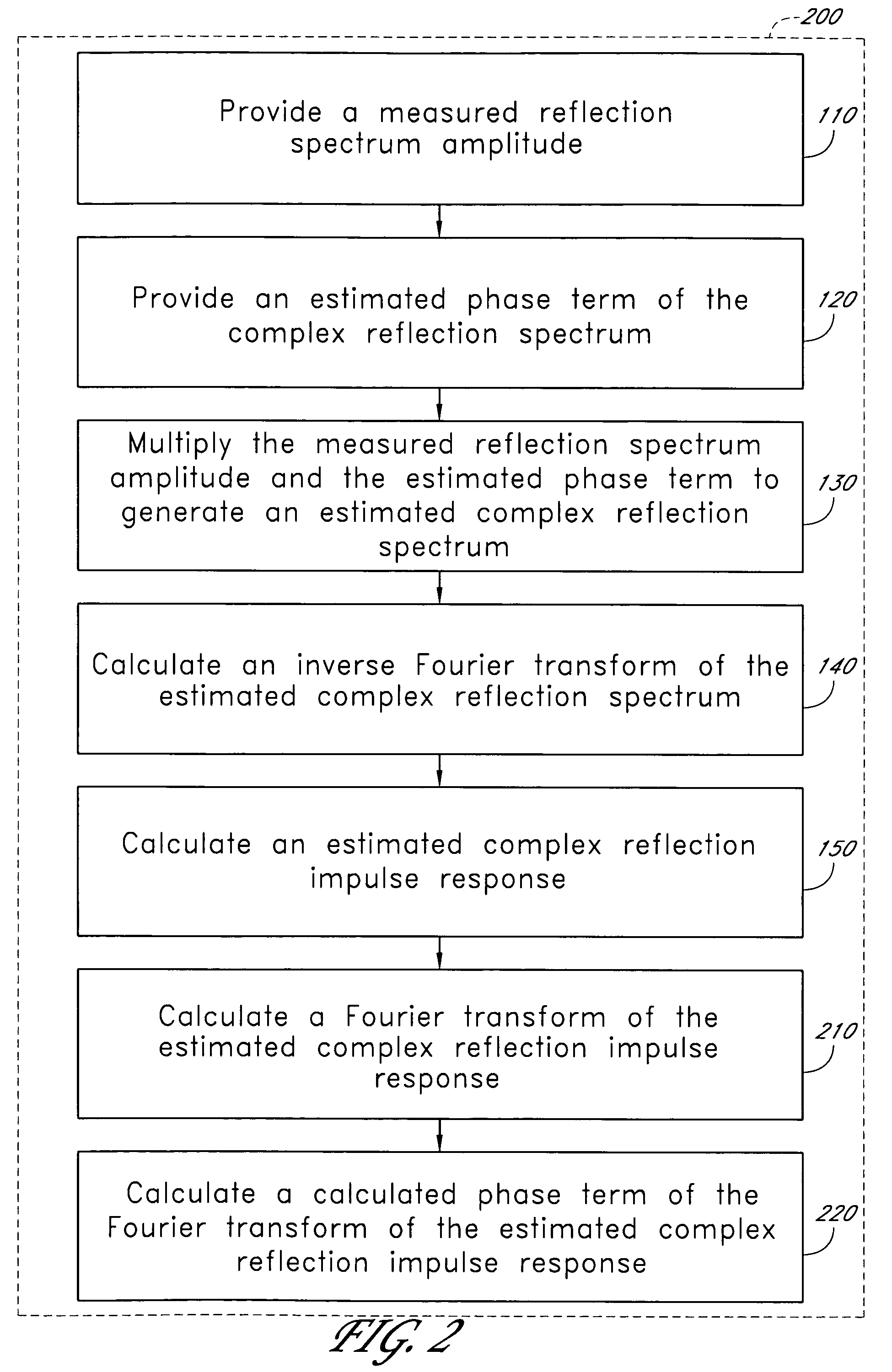Method of characterizing fiber Bragg gratings using iterative processing
a technology of iterative processing and fiber bragg gratings, which is applied in the field ofapparatus and methods of characterizing the optical response of fiber bragg gratings, can solve the problems of inability to accurately characterize the optical response of the fiber bragg grating, the widest width of the input laser pulse is much narrower, and the technique is complicated and inherently sensitive. , to achieve the effect of reducing the noise of the signal
- Summary
- Abstract
- Description
- Claims
- Application Information
AI Technical Summary
Benefits of technology
Problems solved by technology
Method used
Image
Examples
Embodiment Construction
[0068]Certain embodiments described herein provide a simpler and less noise-sensitive technique based on an iterative process to recover the reflection phase, the reflection group delay, the transmission phase, or the transmission group delay of an FBG (e.g., chirped, asymmetric, symmetric, or uniform) from only the measurement of the reflection spectrum amplitude |r(ω)| or the transmission spectrum amplitude |t(ω)|. The measurements involved in certain embodiments are also substantially faster than existing techniques. Furthermore, in certain embodiments in which the FBG is known to be symmetric, both the reflection group delay and the transmission group delay of the FBG are uniquely determined. As described herein, numerical simulations of certain embodiments illustrate a noise sensitivity which is quite low.
[0069]Certain embodiments described herein are useful in computer-implemented analyses of the optical characteristics of FBGs. The general-purpose computers used for such anal...
PUM
| Property | Measurement | Unit |
|---|---|---|
| wavelengths | aaaaa | aaaaa |
| wavelengths | aaaaa | aaaaa |
| wavelength window | aaaaa | aaaaa |
Abstract
Description
Claims
Application Information
 Login to View More
Login to View More - R&D
- Intellectual Property
- Life Sciences
- Materials
- Tech Scout
- Unparalleled Data Quality
- Higher Quality Content
- 60% Fewer Hallucinations
Browse by: Latest US Patents, China's latest patents, Technical Efficacy Thesaurus, Application Domain, Technology Topic, Popular Technical Reports.
© 2025 PatSnap. All rights reserved.Legal|Privacy policy|Modern Slavery Act Transparency Statement|Sitemap|About US| Contact US: help@patsnap.com



